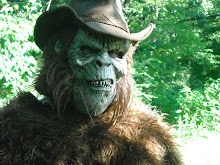Moles
Small, burrowing, insectivorous mammals of the family Talpidae, found throughout the temperate Northern Hemisphere. Typical moles have rounded bodies about 6 in. (15.2 cm) long covered with soft black or gray fur; they have pointed muzzles and lack external ears. They have acute hearing and a highly developed sense of touch at the ends of their noses and tails; their tiny eyes, covered with skin or buried in fur, are sensitive to changes in light level but provide little visual acuity. Moles have short, powerful legs and extremely broad front feet, which are used as shovels and are equipped with enormous digging claws. They can move backwards almost as rapidly as forwards, and most are good swimmers. Moles tunnel just below the surface of the ground, where they hunt for food. Their tunnels make ridges and mounds in fields, gardens, and lawns; quarters for living, nesting, and wintering are in deeper burrows. A single mole can dig about 20 yd (18 m) of tunnel in a day. Moles are voracious eaters, consuming about half their own weight daily. Their diet consists mainly of earthworms and insects, but also includes small mammals such as mice; one mole may even kill and eat another when they happen to meet. They are solitary most of the year, but during the breeding season they travel in pairs. The litter, born in the spring after four weeks of gestation, consists of two to seven young. Typical species include the common European mole, Talpia europaea, and the eastern, or garden, mole of North America, Scalopus aquaticus, both about 6 in. (15.2 cm) long with a 1-in. (2.54-cm) tail. The largest moles are the western moles of North America, genus Scapanus, which may reach a length of 9 in. (22.9 cm). The smallest New World mole is the 3-in. (7.6-cm) shrew mole, Neurotrichus gibsii, of the Pacific Northwest, which resembles a shrew and prefers a forest habitat, spending much time above ground. The strangest-looking of the family is the star-nosed mole, Condylure christata, of northeastern North America, which has a ring of mobile fleshy protuberances around its snout. This mole is a good diver and leads a semiaquatic life; apparently it uses the protuberances to pick up sounds in the water. There are no true moles in the Southern Hemisphere. The golden moles of S Africa are members of the insectivorous family Chrysochloridae; they are burrowing animals with bright golden fur. There are burrowing rodents in Africa called strand moles and burrowing marsupials in Australia called marsupial moles. True moles are classified in the phylum Chordata, subphylum Vertebrata, class Mammalia, order Insectivora, family Talpidae. |

Animal control, animal removal georgia, animal trapping georgia, wildlife control georgia, wildlife removal georgia, wildlife trapping georgia, Gray Squirrel Removal georgia, Gray Squirrel Trapping, Gray Squirrel control, Gray Squirrel Trapping, flying Squirrel Trapping Georgia, flying Squirrel control, flying Squirrel removal, bat removal, bat control, bat exclusion, beaver trapping, beaver removal, beaver control georgia, Rat trapping, rat removal georgia, rat control, raccoon trapping georgia, raccoon removal, raccoon control, coyote trapping georgia, coyote removal, coyote control, opossum trapping, opossum removal georgia, opossum control, fox control, fox trapping georgia, fox removal georgia, bird control georgia, bird exclusion georgia, mole control georgia, muskrat trapping georgia, muskrat removal, snake removal georgia, homey bee removal georgia, honey bee control, carpenter bee removal georgia, carpenter bee control, wasp removal georgia, wasp control, hornet control, hornet removal georgia, yellow jacket removal, yellow jacket control georgia, animal damage repairs and exclusion, dead animal location removal georgia. Honey bee nest removal, hornet nest removal, rodent removal, how to remove bats, how to remove squirrels, critter control, critter removal.
We Service: North Fulton county, Cherokee conty, Forsyth county, Dawson county, Pickens county, Gilmer county, Lumpkin county, Hall county, Gordon county, Murray county, Fannin county, Roswell, Alpharetta, Woodstock, Cumming, Atlanta, Flowery Branch, Suwannee, Oakwood, Gainesville, Ball Ground, Canton, Milton, Blue Ridge, Cherry Log, Ellijay, Duluth, Buford, Talking Rock, Waleska, Jasper, Dawsonville, Big Canoe, Dahlonega,





No comments:
Post a Comment